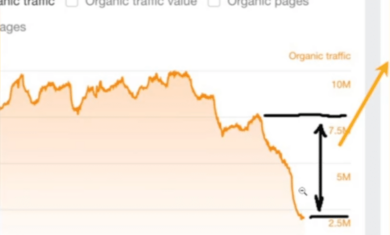A few weeks ago, Seth Godin shared a pretty simple statement from Charles Goodhart: “When a measure becomes a target, it ceases to be a good measure.“
To be honest, it took me a little while to understand what he meant. We set a lot of goals at our company, and we measure our progress toward them. How could that be a bad thing? It’s not, necessarily, but I think it works better when the work you do impacts the measured item, but isn’t something you can do directly.
Will Koehrsen shared a great summary on his blog that explains it well:
In order to increase revenue, the manager of a customer service call center starts a new policy: rather than being paid an hourly wage, every employee is compensated solely based on the number of calls they make. After the first week, the experiment seems like a resounding success: the call center is processing twice the number of calls per day!
The manager, who never bothers to listen to his employees’ conversations as long as their numbers are good, is quite pleased. However, when the boss stops by, she insists on going out to the floor and when she does so, both she and the manager are shocked by what they hear: the employees pick up the phone, issue a series of one word answers, and slam the phone down without waiting for a good-bye. No wonder the number of completed calls has doubled!
Without intending to, by judging performance only by the volume of calls, the manager has incentivized employees to value speed over courtesy.
That’s a very real problem, and it can happen to all of us.
If your goal is to increase your engagement on social media, then it’s easy to post silly quizzes (that have nothing to do with your business) in pursuit of that goal.
If your goal is to increase traffic to your website, there are a lot of easy ways to drive useless traffic to a site.
Go a step deeper
A good way to avoid this is to set your real goal a step deeper. Most companies don’t need more website traffic, they need better website traffic. The problem is that “better” is harder to measure than “more”, so “more” becomes the goal.
Instead, look deeper at your marketing funnel. More traffic at the top might help, but it’s what comes out the bottom of the funnel that really matters. The goal of many businesses is likely to gain more clients and revenue, and in the context of your marketing funnel, getting more traffic to your website might be a good tactic to help get there.
Knowing your numbers can help with this too. You should have a good idea what percentage of visitors make it to each step of your funnel, which makes it easier to spot bogus numbers. If you notice that your website traffic has doubled but visitors that sign up for your lead generation piece stayed flat, the excess visitors on your website are mostly useless.
Measuring your data is essential, but make sure your measurements aren’t creating false hope.




